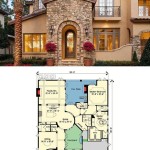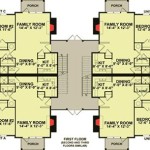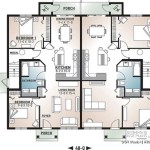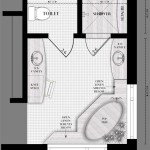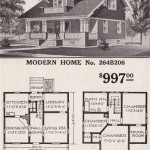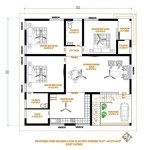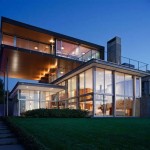Lakefront House Plans for Sloping Lots: Design and Construction Considerations
Lakefront property possesses inherent allure. The proximity to water, coupled with the potential for breathtaking views, makes it a highly desirable location for residential construction. However, building on a lakefront often entails dealing with sloping lots, which present unique challenges and opportunities that demand careful planning and design. Lakefront house plans specifically tailored for sloping lots address these complexities, ensuring structural stability, maximizing views, and minimizing environmental impact.
Adaptation to the natural topography is paramount when designing a lakefront home on a sloping lot. A standard, flat-ground house plan is rarely suitable. Instead, architects and designers must consider the slope's angle, soil composition, drainage patterns, and existing vegetation to create a design that seamlessly integrates with the surrounding landscape. Failing to do so can lead to costly construction errors, increased maintenance burdens, and potential environmental damage.
Effectively planned lakefront house plans for sloping lots focus on minimizing site disturbance. This includes limiting the amount of excavation required, preserving existing trees and vegetation, and implementing erosion control measures to prevent sediment runoff into the lake. By working with the natural contours of the land, builders can reduce construction costs and create a more environmentally sustainable dwelling.
Understanding the Challenges of Sloping Lots on Lakefront Properties
Sloping lakefront lots present several challenges that require careful consideration during the design and construction phases. These challenges can significantly impact the overall cost, complexity, and longevity of the project. Identifying and addressing these issues early on is crucial for a successful outcome.
Foundation Design: One of the primary challenges is designing a stable and appropriate foundation. Traditional slab-on-grade foundations are often unsuitable for sloping lots. Alternatives include stepped foundations, pier and beam foundations, or walkout basement foundations. Each option has its own advantages and disadvantages in terms of cost, structural integrity, and usability. Stepped foundations follow the contours of the slope, creating multiple levels within the foundation. Pier and beam foundations elevate the house above the ground, minimizing site disturbance and allowing for air circulation. Walkout basements offer additional living space and easy access to the lakefront, but require extensive excavation and proper drainage.
Drainage and Erosion Control: Managing water runoff is another critical aspect. Sloping lots are prone to erosion, particularly during heavy rainfall. Proper drainage systems, including French drains, swales, and retaining walls, are essential to divert water away from the foundation and prevent soil erosion. Erosion control measures, such as silt fences and vegetation cover, should be implemented during and after construction to stabilize the soil and protect the lake's water quality.
Accessibility: Access to the lakefront can be difficult on steep slopes. Designing pathways, stairs, or even a funicular can improve accessibility and enhance the enjoyment of the property. These features must be carefully integrated into the landscape and comply with local building codes and accessibility standards.
Structural Stability: The slope itself can pose a threat to structural stability. Soil composition, slope angle, and groundwater levels can all affect the stability of the foundation and surrounding landscape. Geotechnical investigations are often necessary to assess these factors and design appropriate structural reinforcements, such as retaining walls or soil stabilization techniques.
Key Design Elements for Lakefront Homes on Sloping Lots
Successfully integrating a house into a sloping lakefront property requires incorporating specific design elements that address the unique challenges and maximize the potential of the site. These elements should not only enhance the functionality and aesthetics of the home but also minimize its environmental impact.
Multi-Level Design: A multi-level design is often the most effective way to adapt a house to a sloping lot. By stepping the house down the slope, architects can create distinct living spaces on different levels, each with its own unique views and access to the outdoors. This approach minimizes the amount of excavation required and allows the house to blend more seamlessly with the natural terrain. Each level can have its own specific function with the lowest level potentially opening up onto the lakefront itself.
Large Windows and Decks: Maximizing views is a primary objective for lakefront homes. Large windows, strategically placed to capture the best vistas, are essential. Decks and balconies, extending outward from different levels of the house, provide outdoor living spaces and further enhance the connection with the lake. The orientation of the decks and windows needs to be planned to account for sunlight and ensure the views and privacy desired are achieved. Material choice for decks needs to take climate variables into account, particularly moisture resistance.
Walkout Basements: A walkout basement is a popular feature in lakefront homes on sloping lots. It provides additional living space with direct access to the lakefront, creating a seamless transition between indoor and outdoor living. The walkout basement can be used as a recreation room, guest suite, or storage area. The construction of a walkout basement needs careful planning to ensure proper drainage and waterproofing to prevent moisture problems.
Retaining Walls and Landscaping: Retaining walls are often necessary to stabilize slopes and create usable outdoor spaces. They can be constructed from a variety of materials, including stone, concrete, or timber. Landscaping plays a crucial role in integrating the house into the surrounding environment. Native plants can help to stabilize the soil, provide habitat for wildlife, and enhance the aesthetic appeal of the property. Careful selection of plants that thrive in the local climate and soil conditions is essential for long-term success.
Sustainable Design Principles: Lakefront homes should incorporate sustainable design principles to minimize their environmental impact. This includes using energy-efficient windows and insulation, installing solar panels, and implementing rainwater harvesting systems. Permeable paving materials can reduce stormwater runoff and allow water to infiltrate back into the ground. Using locally sourced materials can reduce transportation costs and support local economies.
Navigating Regulations and Permits for Lakefront Construction
Building on a lakefront property often involves navigating a complex web of regulations and permit requirements. These regulations are designed to protect water quality, preserve natural habitats, and ensure public safety. Understanding and complying with these regulations is essential for a successful project.
Zoning Regulations: Local zoning regulations dictate the permissible uses of land, building setbacks, height restrictions, and other development standards. These regulations may vary depending on the specific location of the property and the zoning district. It is important to consult with local planning officials to understand the specific zoning regulations that apply to the property.
Building Codes: Building codes establish minimum standards for the design and construction of buildings to ensure structural safety, fire resistance, and energy efficiency. These codes are typically based on national model codes, such as the International Building Code (IBC), but may be amended by local jurisdictions. Compliance with building codes is mandatory for all construction projects.
Environmental Regulations: Lakefront development is often subject to strict environmental regulations designed to protect water quality and preserve natural habitats. These regulations may include restrictions on tree clearing, limitations on impervious surfaces, and requirements for erosion control measures. Permits may be required from state or federal agencies, such as the Environmental Protection Agency (EPA), to ensure compliance with these regulations.
Shoreline Management Regulations: Many states and local jurisdictions have specific regulations governing development along shorelines. These regulations may include restrictions on building setbacks from the water's edge, limitations on dock construction, and requirements for preserving natural vegetation along the shoreline. The purpose of these regulations is to protect water quality, prevent erosion, and preserve the aesthetic character of the shoreline.
Permit Process: Obtaining the necessary permits for lakefront construction can be a lengthy and complex process. It typically involves submitting detailed plans and specifications to various government agencies for review and approval. The review process may include public hearings and opportunities for public comment. It is important to start the permit process early and to work closely with qualified professionals, such as architects, engineers, and environmental consultants, to ensure that all requirements are met.
Successfully navigating the complex landscape of planning regulations requires diligent research, proactive communication with local authorities, and a commitment to environmentally responsible building practices. This will contribute to a project that enhances both property value and the natural beauty of the surrounding environment.

House Plans For A Sloped Lot Dfd Blog

Awesome Lakefront House Plans Sloping Lot S Home Building Plan Lake

House Plans For A Sloped Lot Dfd Blog

Best Simple Sloped Lot House Plans And Hillside Cottage

Best Lake House Plans Waterfront Cottage Simple Designs

Hillside And Sloped Lot House Plans

Sloped Lot House Plans Walkout Basement Drummond

The Perfect Lake House Designs For Your Lot Don Gardner Architects

Plan 64452sc House For A Rear Sloping Lot Architectural Design Plans Lake

Hillside And Sloped Lot House Plans

